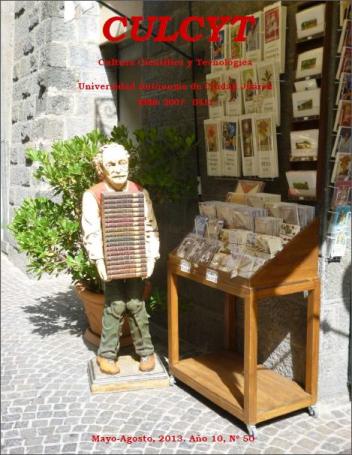Sistema neuro-difuso para el control de atributos de calidad en inyeccion de plasticos
Keywords:
Lógica Difusa, Redes Neuronales Artificiales, Inyección de Plásticos, Control ModernoAbstract
El presente trabajo presenta un hibrido de redes neuronales artificiales y lógica difusa aplicado para la optimización y control del proceso de inyección de plásticos. El objetivo de este estudio es mantener bajo control atributos de calidad de componentes plásticos mediante la manipulación de ciertos parámetros. El software de análisis de elemento finito “Moldflow” es empleado para simular el proceso de inyección. Como resultado se obtiene un sistema de lazo cerrado capaz de mantener bajo control en todo instante los atributos. Los resultados muestran una mejora significante después de cada iteración del sistema hasta lograr los resultados deseados.
Downloads
References
Altan, Mirigul (2010). Reducing shrinkage in injection moldings via the Taguchi, ANOVA and neural network methods. Materials and Design, 31, 599-604.
Shen, Changyu; Wang, Lixia & Li, Qian (2007). Optimization of injection molding process parameters using combination of artificial neural network and genetic algorithm method. Journal of Materials Processing Technology, 183, 412-418.
Chen, Wen-Chin; Fu, Gong-Loung; Tai, PeiHao & Deng, Wei-Jaw. (2009). Process parameter optimization for MIMO plastic injection molding via soft computing. Expert Systems with Applications, 36, 1114-1122.
Deng, Yi-Min; Zhang, Yong & Lam, Yee Cheong (2010). A hybrid of mode-pursuing sampling method and genetic algorithm for minimization of injection molding warpage. Materials and Design, 31, 2118-2123.
Erzurumlu, Tuncay & Ozcelik, Babur (2006). Minimization of warpage and sink index in injection-molded thermoplastic parts using Taguchi optimization method. Materials and Design, 27, 853861.
Farshi, Behrooz; Gheshmi, Siavash & Miandoabchi, Elyar (2011). Optimization of injection molding process parameters using sequential simplex algorithm. Materials and Design, 32, 414-423.
Huang, Feng Li (2011). Optimization of Processing Parameters in Injection Molding based on Adaptive Ant Colony Algorithm. Advanced Materials Research, 179-180, 304-310.
Huang, Ming-Chih &Tai, Ching-Chih (2001). The effective factors in the warpage problem of an injection molded part with a thin shell feature. Journal of Material Processing Technology, 110, 1-9.
Kartalopoulos, Staatios (1996). Understanding Neural Networks and Fuzzy Logic.
New York, NY: IEEE Press. Lau, H.C.W.; Wong, T.T. & Pun, K.F. (1999). Neural-fuzzy modeling of plastic injection molding machine for intelligent control. Expert Systems with Applications, 17, 33-43.
Liao, X.P.; Xie, H.M.; Zhou, Y.J. & Xia, W. (2007). Adaptive adjustment of plastic injection processes based on neural network. Journal of Materials Processing Technology, 187-188, 676-679.
Lin, Jeen & Lian, Ruey-Jing. (2009). Hybrid fuzzy-logic and neural-network controller for MIMO systems. Mechatronics, 19, 972-986.
Lotti, C. & Bretas, R.E.S. (2006). Correlations between Injection Molding Parameters, Morphology and Mechanical Properties of PPS Using Artificial Neural Networks. International Polymer Processing, 21, 104-115.
Ozcelik, Babur & Sonta, Ibrahim (2009). Warpage and structural analysis of thin shell plastic in the plastic injection molding. Materials and Design, 30, 367-375.
Prasad, Ram; Nguyen, Hung; Walker, Elbert &Walker, Carol (2003). A first course in Fuzzy and Neural Control. Boca Raton, Florida: Chapman & Hall.
Rogers, J.K. (1991). Intelligent Molding: Expert Systems are Coming on Line Now. Modern Plastics Magazine, 68, 56-60.
Rosato, D.V. & Rosato, D.V. (1995). Injection Molding Handbook (2nd Ed.).
New York, NY: Chapman & Hall. Shie, Jie-Ren (2008). Optimization of injection molding process for contour distortions of polypropylene composite components by a radial basis neural network. International Journal of Advanced Manufacturing Technology, 36, 10911103.
Shie, Jie-Ren (2008). Optimization of injection-molding process for mechanical properties of polypropylene components via a generalized regression neural network. Polymers for Advanced Technologies, 19, 73-83.
Spina, R. (2006). Optimization of injection moulded parts by using ANN-PSO approach. Journal of Achievements in Materials and Manufacturing Engineering, 15, 146-152.
Wang, Li-Xin & Mendel, Jerry (1992). Generating Fuzzy Rules by Learning from Examples. IEEE Transactions on Systems, Man, and Cybernetics, 22, 1414-1427.
Yin Fei; Mao, Huajie & Hua, Lin (2011). A hybrid of back propagation neural network and genetic algorithm for optimization of injection molding process parameters. Materials and Design, 32, 3457-3464
Published
How to Cite
Issue
Section
License
Todos los contenidos de CULCYT se distribuyen bajo una licencia de uso y distribución “Creative Commons Reconocimiento-No Comercial 4.0 Internacional” (CC-BY-NC). Puede consultar desde aquí la versión informativa de la licencia.
Los autores/as que soliciten publicar en esta revista, aceptan los términos siguientes: a) los/las autores/as conservarán sus derechos de autor y garantizarán a la revista el derecho de primera publicación de su obra; y b) se permite y recomienda a los/las autores/as agregar enlaces de sus artículos en CULCYT en la página web de su institución o en la personal, debido a que ello puede generar intercambios interesantes y aumentar las citas de su obra publicada.



